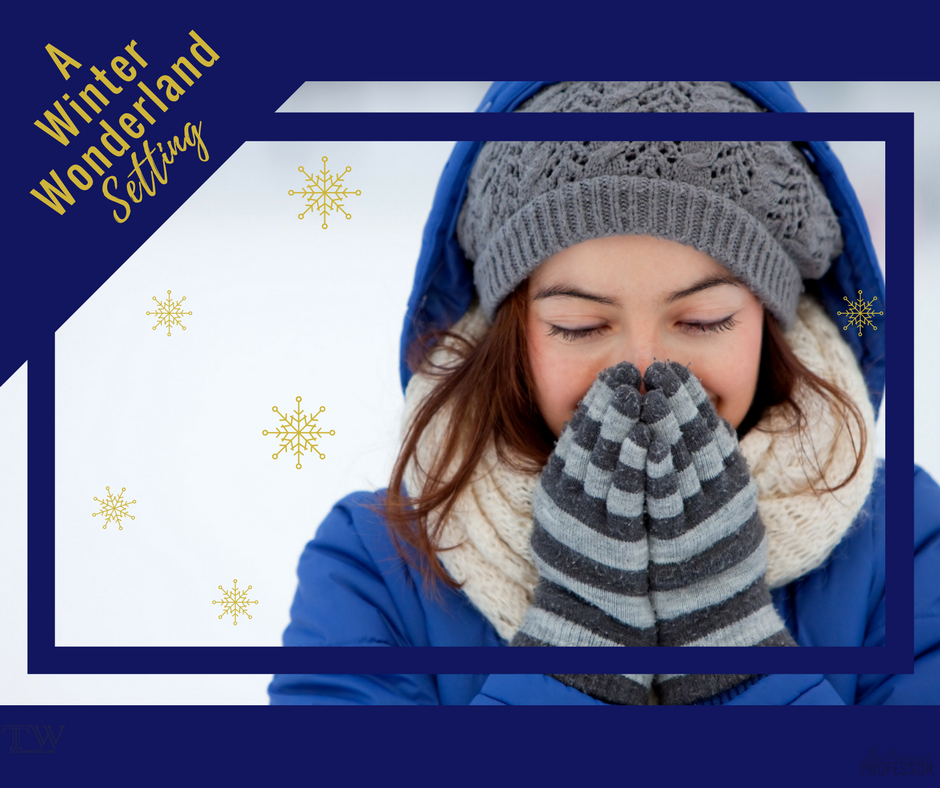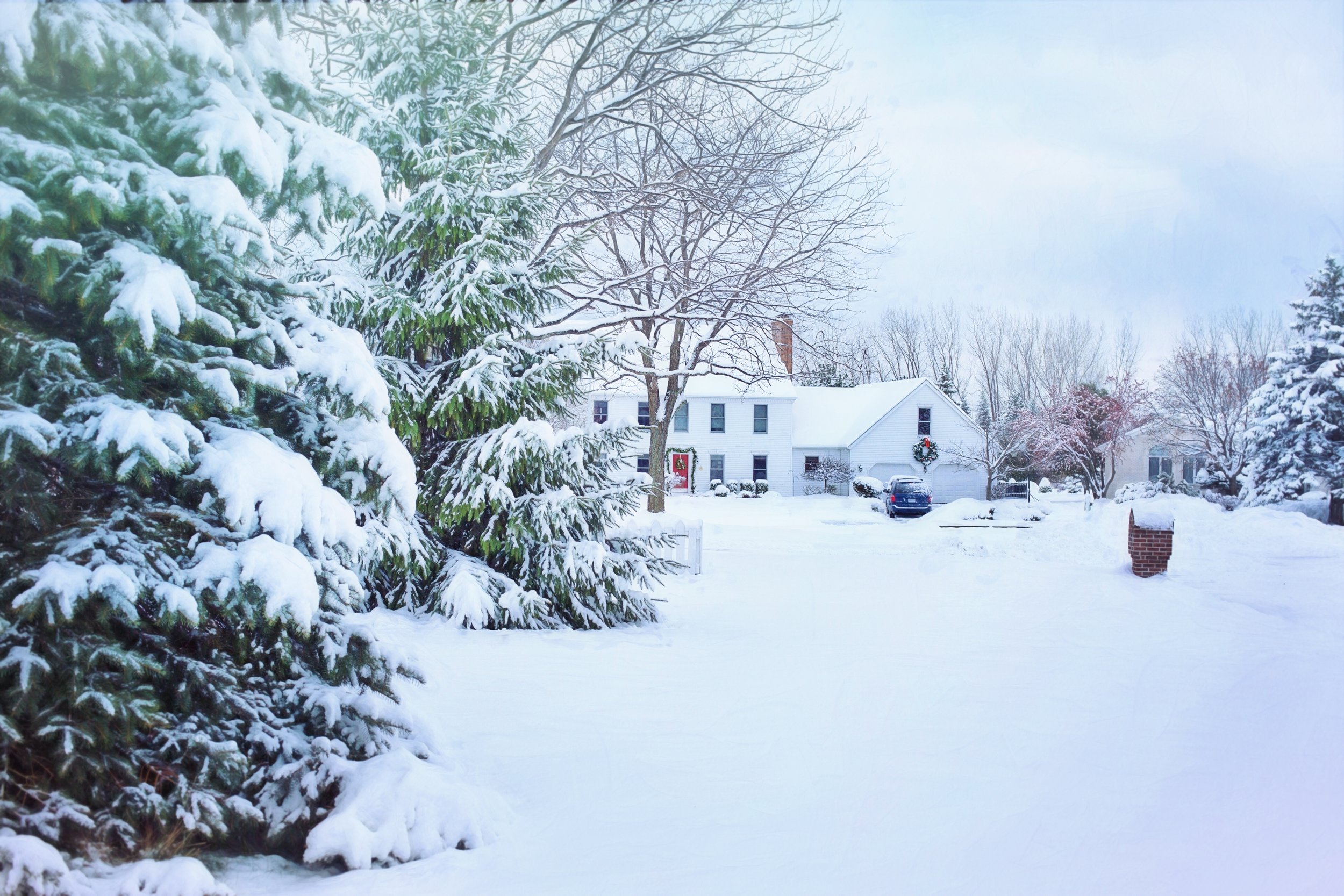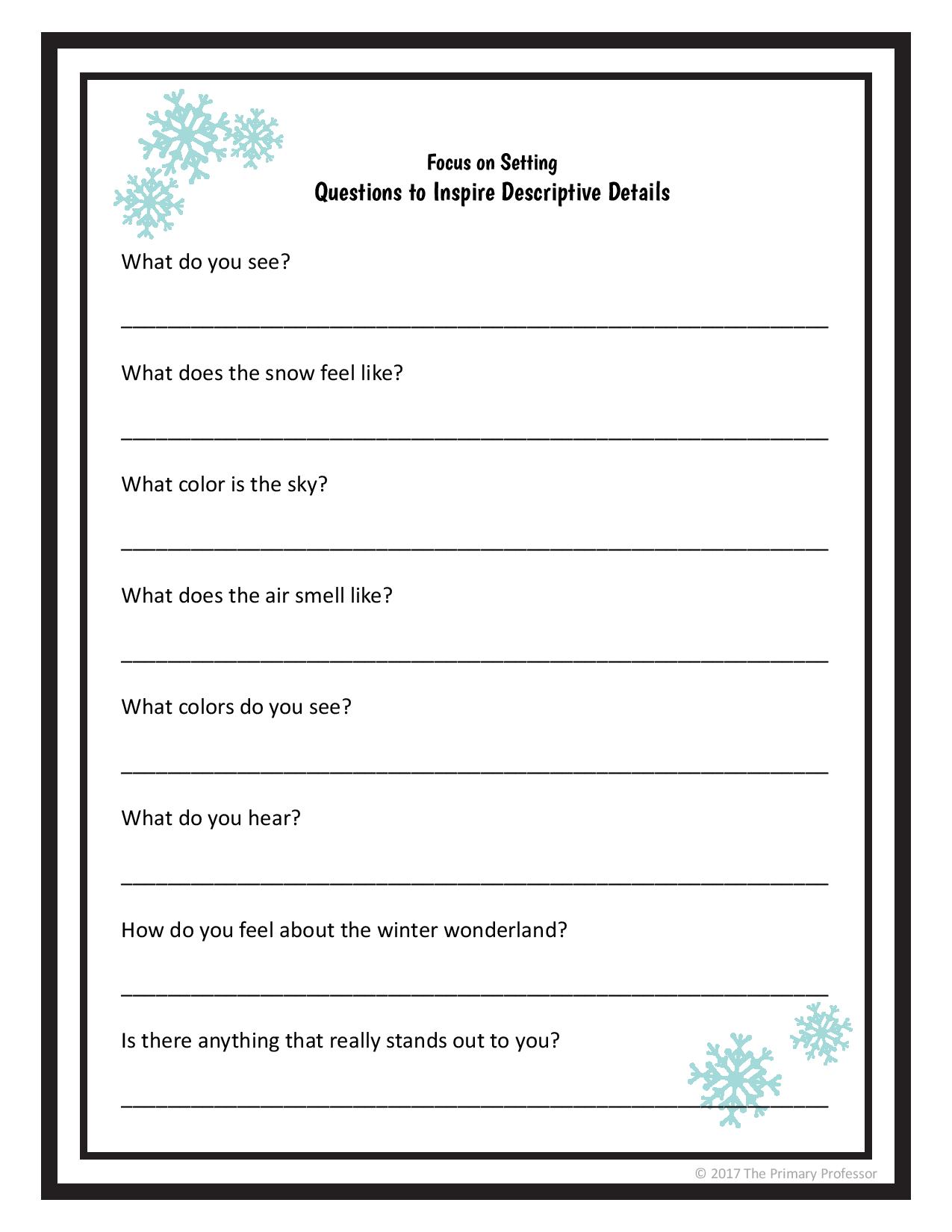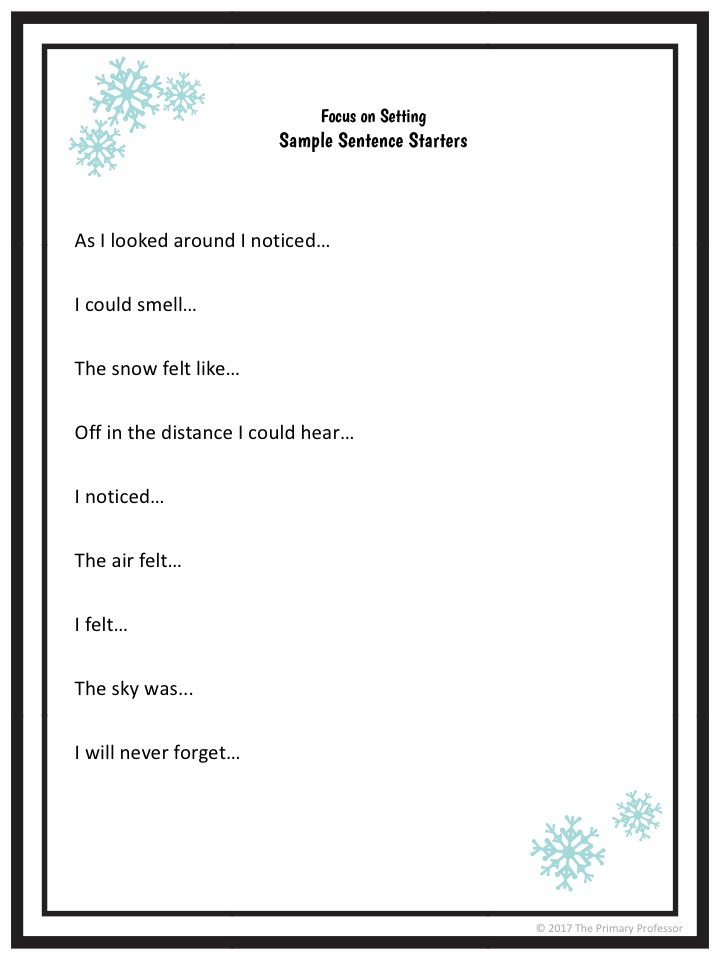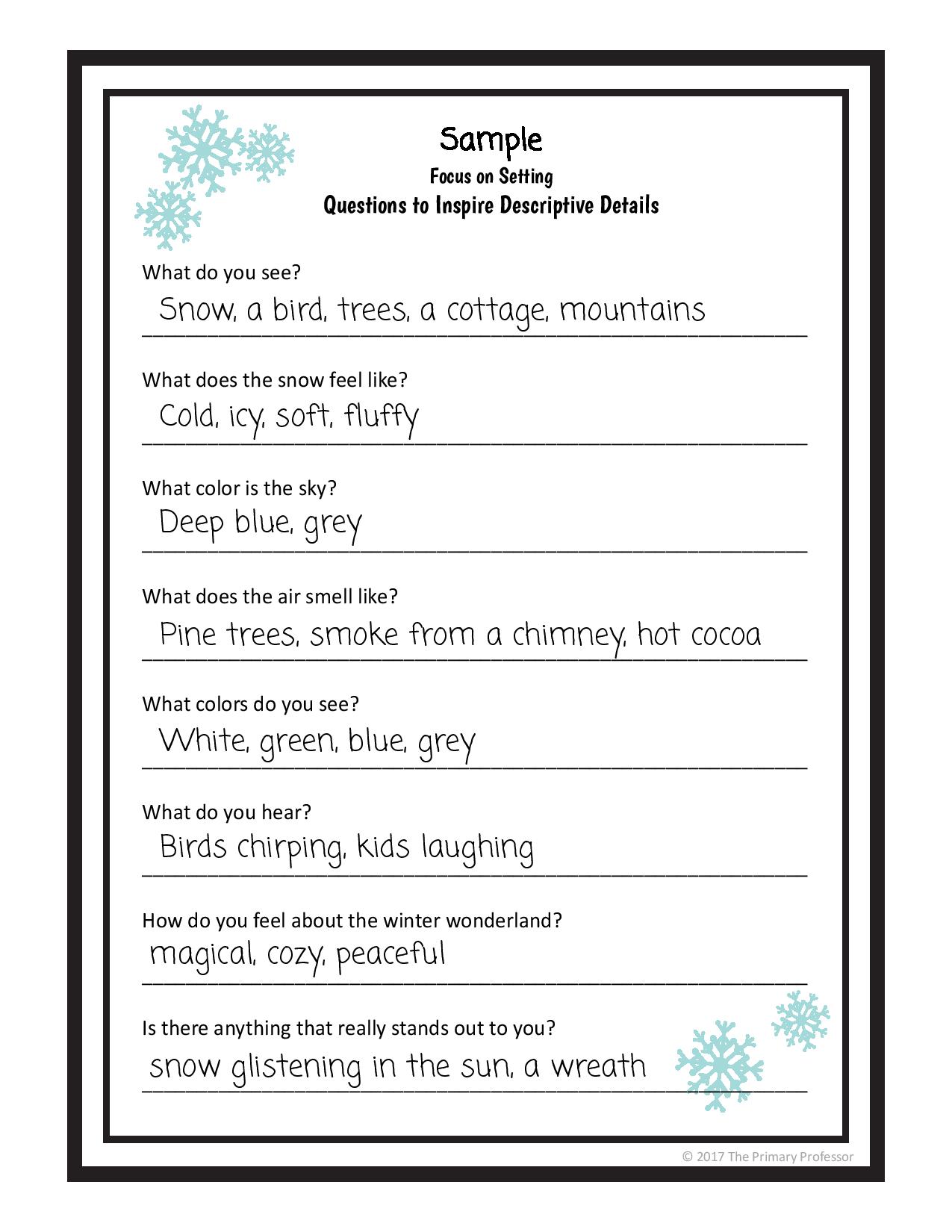Descriptive Writing Lesson - A Winter Setting
Winter Descriptive Writing
One area of narrative writing that my students continue to need practice is with elaborating details. When my students write to tell a story, they generally want to get the information out in the shortest way possible. Getting them to stop the story and elaborate on details is often a challenge. Adding descriptive details is a learned skill in which students need to be given support and lots of practice.
One area of student writing that often gets overlooked is describing the setting of a story. I really enjoy helping my students practice this skill. When given a little structure and support, students can transform their writing. By describing the setting in elaborate detail, the students learn to set the stage and help draw the reader into their story.
11 Steps for Writing a Descriptive Setting
STEP 1: Select a setting (like winter wonderland) or allow your students to select a topic.
STEP 2: Show images of a setting to inspire descriptive ideas.
STEP 3: Whole Group - Explain to students that the purpose of writing a descriptive setting is to paint a picture for their reader using words. In order for the reader to visualize the story, they need to have a clear picture of where it takes place.
STEP 4: Whole Group: As a class, create questions about the setting that will help draw out more information about the setting. Start by modeling questions for the students such as: What colors do you see? What does the air feel like? What do you hear? When in doubt, use the five senses a guide. The first time, you may need to generate the questions for the students, but as they practice more and more, students will be able to ask the questions.
STEP 5: whole class or small group: have the students generate answers to the questions.
STEP 6: whole class: Model for students how to take the answers to the questions and make them complete sentences. Students often want to simply list the answers, so be sure to demonstrate how to use sentence variety.
STEP 7: Independently: give students the brainstorming page and allow students to write down any words or phrases that describe the scene using the questions as a guide.
STEP 8: Independently – Have students write their own setting description independently. If students get stuck, you can scaffold by offering different sentence starters.
STEP 9: Independently – Have students revise and edit their descriptive paragraph.
STEP 10: Independently: Students write or type their final draft
STEP 11: Independently: Self Assessment. Students use the Descriptive Writing Quick Rubric to self assess their writing.
Winter Wonderland Descriptive Writing Resources
Have your students write a descriptive paragraph all about a snowy winter setting. Use these photos, questions, sentence starters and sample to help your students get writing! You can also download my freebie with lesson and printable HERE.
“I stepped out into a winter wonderland.”
Winter Setting Image
Ideas for Detail Questions:
What do you see?
What does the snow feel like?
What color is the sky?
What does the air smell like?
What colors do you see?
What do you hear?
How do you feel about the winter wonderland?
Is there anything that really stands out to you?
Sample Sentence Starters:
As I looked around I noticed…
I could smell…
The snow felt like…
Off in the distance I could hear…
I noticed…
The air felt…
I felt…
The sky was...
I will never forget…
Samples:
What do you see? Snow, a bird, trees, a cottage, mountains
What does the snow feel like? Cold, icy, soft, fluffy
What color is the sky? Deep blue, grey
What does the air smell like? Pine needles, smoke from a chimney, hot cocoa
What colors do you see? White, green, blue, grey
What do you hear? Birds chirping, kids laughing
How do you feel about the winter wonderland? It feels magical, warm inside, peaceful
Is there anything that really stands out to you? The way the snow glistens in the sun, the wreath on the house
Sample winter setting paragraph:
I stepped out into a winter wonderland. Suddenly, the cold air stung my cheeks so I pulled my scarf up closer to my face. As I looked around I noticed a white blanket of snow covering the trees, ground, and houses. I was surprised by how quiet everything seemed. The only sound I could hear was my boots crunching in the snow. The smell of damp pine trees made the air feel fresh and clean. I felt so peaceful to be walking in such a magical place.
Have fun getting in the winter mood with this descriptive writing lesson for elementary students!
Click here to download the Winter Wonderland Descriptive Writing Freebie. Complete with winter setting images, sample questions for kids to answer, sentence starters, a writing sample, and decorative paper for a final draft.
I’m Whitney Ebert, founder of ElementaryWritingCoach.com. As you may have guessed, teaching young authors to develop their craft and feel confident in their writing skills is kind of my thing.
I have 10+ years teaching experience in elementary education, and I've taught every grade level from kindergarten to sixth grade (except first). My teaching passions include interest-based learning, creative technology, project based learning, and building confident writers. Additionally, I have my M.S. in Instructional Media, so I frequently incorporate digital flare into projects and writing assignments.
I live in a sunny beach town with my husband, preschooler and baby. When I'm not teaching, blogging, or designing new lesson plans, you can find me at the beach with the family.
Find out more about The Elementary Writing Coach at www.elementarywritingcoach.com.

